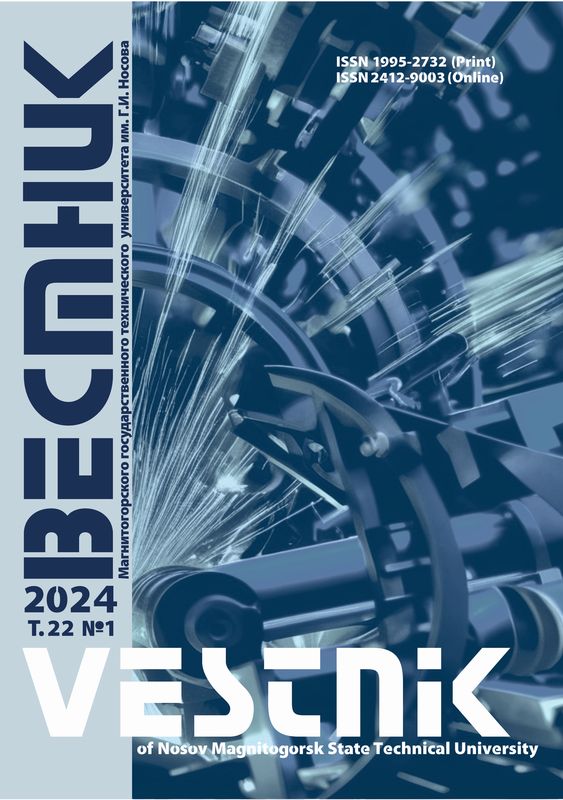Abstract
At the processing plants of the mining industry, a significant part of the total processing costs (from 45 to 65%) is spent on crushing and grinding operations, including mill lining. The efficiency of grinding equipment in the conditions of abrasive impact of ore and a continuous operation requires periodic replacement of a worn-out lining. The costs for its purchase, delivery and installation during a year amount to tens of millions of rubles, and the equipment downtime associated with the replacement of the lining reduces the volume of finished products by hundreds of millions of rubles per year. The practical efficiency of imported mill liners is not always confirmed by the expected positive result of their actual operation, and an increase in the equipment utilization coefficient (EUC), but their use definitely requires significant financial costs and entails risks in an unstable political and financial situation. Therefore, the task of increasing the service life of the mill liners is urgent. The paper presents a suggested and implemented solution to increase the lifetime of 110G13L steel lining for the wet semi-autogenous grinding mill (SAG mill-70х23). It includes monitoring of the actual liner operation and a mathematical simulation of the ore and ball trajectory in the mill, reveals zones of intensive wear, defects of liner castings and developed new structures of the lining elements. Applying the simulation software package, the authors studied the existing casting technologies, found reasons for defects and developed the casting technology for a new design of liners excluding defects. The paper contains industrial tests of the liners of a new design manufactured according to the developed technologies.
Keywords
Semi-autogenous grinding mill, casting, simulation, casting technology.
1. Kryukov D.K. Futerovki sharovykh melnits [Ball mill lining]. Moscow, 1965, 182 p. (In Russ.)
2. Liners for the Grinders. Written by E&MJ News [Electronic resource]. Available at: http://www.e-mj.com. Published: Tuesday, 08 June 2010 15:04 (Accessed: 22.05.2017).
3. Matti Lindroos, Marian Apostol, Vuokko Heino, Kati Valtonen, Anssi Laukkanen, Kenneth Holmberg, Veli-Tapani Kuokkala. The deformation, strain hardening, and wear behavior of chromium-alloyed hadfield steel in abrasive and impact conditions. Tribology Letters. 57:24. March 2015. Doi: 10.1007/s11249-015-0477-6.
4. Nasajpour A., Kokabi A.H., Davami P., Nikzad S. Effect of molybdenum on mechanical and abrasive wear properties of coating of as weld Hadfield steel with flux-cored gas tungsten arc welding. Journal of Alloys and Compounds, 2016, vol. 659, pp. 262–269.
5. I. Mejia, A. Bedolla-Jacuinde, J.R. Pablo. Sliding wear behavior of a high–Mn austenitic twinning induced plasticity (TWIP) steel microalloyed with Nb. Wear, vol. 301, issues 1–2, April–May 2013, pp. 590–597. Doi: 10.1016/j.wear.2013.01.054.
6. Xing Tian, Hong Li, Yansheng Zhang. Effect of Al content on stacking fault energy in austenitic Fe–Mn–Al–C alloys. Journal of Materials Science. September 2008, volume 43, issue 18, pp. 6214-6222. Doi: 10.1007/s10853-008-2919-0.
7. Vdovin K.N., Feoktistov N.A., Khabibullin Sh.M. The study of the process of operation of 110G13L steel cast liners in SAG mill 70Х23. Liteynye protsessy [Casting processes], 2013, no. 12, pp. 8–11. (In Russ.)
8. Voronin Yu.F., Kamaev V.A. Atlas liteynykh defektov. Chernye splavy [Atlas of casting defects. Ferrous alloys]. Moscow: Mashinostroenie-1, 2005, 330 p. (In Russ.)
9. Lakedemonskiy A.V., Kvasha F.S., Medvedev Ya.I. et al. Liteynye defekty i sposoby ikh ustraneniya [Casting defects and methods of their elimination]. Мoscow: Мashinostroenie, 1972, 152 p. (In Russ.)
10. Lakhtin Yu.M. Leonteva V.P. Materialovedenie: uchebnik dlya vyssh. tekhnich. uchebn. zavedeniy [Materials science: the textbook for higher technical education institutions]. 3rd edition; revised and updated. Moscow: Mashinostroenie, 1990, 528 p. (In Russ.)
11. Particle dynamics simulation by the DEM method [Electronic resource]. Available at: http://www.rocky-dem.ru/mills/ (Accessed: 17.08.2016). (In Russ.)
12. Kent D. Carlson, Christoph Beckermann. Prognozirovanie obemnoy doli usadochnoy poristosti s ispolzovaniem bezrazmernogo kriteriya Niyamy [Prediction of shrinkage pore volume fraction using a dimensionless Niyama criterion], [Electronic resource]. Available at: http://www.castsoft.ru/ Articles/PDF/CarlsinBeckermann_Niyama.pdf (Accessed: 22.10.2017). (In Russ.)
13. Vdovin K.N., Кhabibullin Sh.М. Improvement of the production technology for 110G13L steel cast liners for SAG mill 70Х23. Liteishchik Rossii [Russian Foundryman], 2014, no. 1, pp. 13–15. (In Russ.)
14. Vdovin K.N., Feoktistov N.А., Khabibullin Sh.М. Development of production technology and study of the quality of cast liners with the use of NDT methods. Liteynye protsessy [Casting processes], 2014, no. 13, pp. 75–82. (In Russ.)
15. Kolokoltsev V.M., Vdovin K.N., Chernov V.P., Feoktistov N.A., Gorlenko D.A., Dubrovin V.K. Study of abrasive and impact and abrasive wear mechanisms of high-manganese steel. Vestnik Magnitogorskogo gosudarstvennogo tekhnicheskogo universiteta im. G.I. Nosova [Vestnik of Nosov Magnitogorsk State Technical University], 2017, vol. 15, no. 2, pp. 54–62. (In Russ.)












